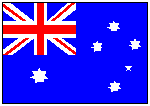

![]()

Sega Dance - Mauritian Folklore
|
|
As far back as 1768, travellers to Mauritius were bringing back tales of slaves' singing and dancing which seemed to their entranced eyes so different and special. Bernardin de St Pierre then, spoke of the slaves' passion for music and of the soft harmony of unknown instruments to match songs with every present love themes. Milber, in 1803, spoke of sensual dance steps that clearly show their warm intentions, and Rousselin, in 1860, was one of the many to be inspired to attempt the capture of the atmosphere of slave dancing in drawings. |
They had all witnessed the magic of the the black shega dance or music, or as it soon came to be known; the sega. They had all heard the music born of African souls soothed in their lost homelands on rapid drumbeats and pounding rhythms. African souls now caught in an island's fragrance and soft beauty. From this unison came the sega.
The travellers had heard the bobre, the ravane, the maravane and the triangle. New ingenuous instruments never heard before. The bobre is a long wooden bow kept arched over a large gourd-like, rough skinned, hollow fruit (the calebasse) by a vegetal string, this being hit by a stout wooden rod. Its mournful twang has however, sadly, been lost over the years and it is no longer part of a sega music team. The ravane is a hide, pulled taught over a wooden circular frame. Tightened even more to a vibrant limit over a fire-wood flame, and sometimes ringed with bells, it is at the heart of the sega's beat. Its thrilling husky bark is the beginning of the dance.
The maravane used to be a calebasse filled with small stones or dried nuts. The stones or dried nuts have remained but are now shaken in a wooden frame to send dancers on along their catchy beat.The triangle is ever the same metal frame on which a metal rod is beaten, for a high pitched tingling note. The blending of these sounds causes an irrepressible urge to get up and dance.
|
(The Body Language of the Tropics)
|
Philippe OnLine |
||
| Sega is alive and well in Toronto | Link to TiFrère | ||
The dancing the travellers had marvelled at, is the body language of slaves forgetting, leaving pain and sorrow behind at the end of a hard day's work. Le Morne beach, on the south west of the island is linked to the history of sega. In its legend, the beach is moonlit and cool, a fire burns glowing over the faces, hiding the flaws of the shacks nearby. The dancers wait and watch as the musicians heat the ravane. Maybe some landlords have brought over a few friends from overseas. They too wait to watch. They may even, if they have thought to bring and offer a few rhum caskets, hear their praises being sung in Creole, raucous French cooked in African spices. The songs come straight from the singer's heart. They were in these days, hardly ever rehearsed. One of the best Sega singers of our days, Ti frère, has won his fame for his spontaneity, quite poetic, often saucy!
| But now the ravane is heard, and the dancers are taken in its spell. They move in a slow shuffle, with graceful small sexy swings of the hips. man and woman approach, barely touch, than part. They move with the music, skirts are gently lifted, the men's arms stretched out free. Then the musicians are lost in their own world and the music beats faster, wilder. And the dancers follow its lead. They move in closer to each other, again barely touch and suddenly whirl away, spinning, hips still swinging. Skirts are now flaring, brown skins glistening with sweat, brown legs churning the sand. The fire wood exploding in sparks as if caught in the mood too. Lone male dancers cut in, between dancing partners and coax the breathless girl away till the new pair be cut through by another. |
And when the music is master of all senses, they kneel facing each other and ever swinging, gently lean one over the other, until one's shoulders is grazing the sand. The scene is repeated in all isles of the Mascarenas region. Maybe in Rodrigues the rhythm beats faster, maybe in Reunion the sega has matured into the sultry, slow maloya and maybe in Agalega small sea shells are clapped in unison to the maravane. But all give freedom in the arms of music.
|
|
Today, the sega is a sunny girl wearing a brightly patterned long flared skirt with matching top, swinging gaily in a 5-star hotel grounds before laughingly pulling sheepish tourists onto the dance floor to teach them the basics. Or, today, sega is a jeans clad youth whirling away at a party, a coke can in one hand while his family watch and cheer. The music they dance to comes on the radio, cd or cassette player. Carefully edited sega pieces, with catchy tunes, witty lyrics and electronic music thrown in. |
The voice is the same insolent Creole, the rhythm just as enticing. But the spirit hides elsewhere. It hides on quiet public beaches, around an intimate camp fire, where a few friends share a bottle of rhum, quietly warm the ravane and sing words straight from the heart, while a girl dances dreamily, staring at the night sky.
your feedback |
Designed and compiled by Madeleine and Clancy Philippe
Information contained in this homepage is given as supplied and in good faith. No responsibility is taken for any losses or misgivings which may arise from the use of any supplied information. We welcome emails bringing to our attention any inaccuracies or suggestions for improvement.
Copyright Clancy J Philippe - Updated May 2001